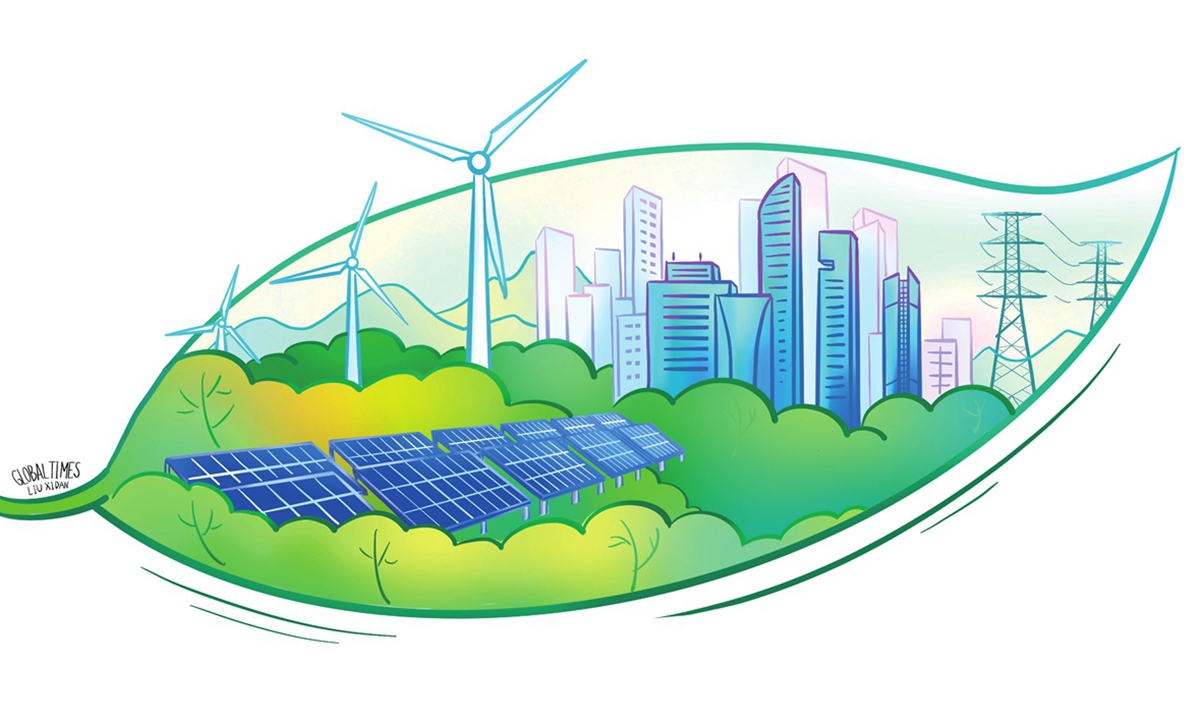
Illustration: Liu Xidan/GT
Vietnam's new energy policy not only charts a path for the country's energy transition but also creates new opportunities for enhanced China-Vietnam cooperation in the realm of green energy. This collaborative effort will also catalyze regional green grid integration through enhanced electricity market connectivity across Southeast Asia.
Vietnam's government approved this week a revised energy policy that calls for the nation to more than double its total generating capacity by 2030 from 2023 levels, with the aim of increasing capacity nearly 10-fold by 2050, Bloomberg reported on Thursday. The roadmap also calls for massive increases in wind and solar capacity, involving as much as 73 gigawatts of solar and 38 gigawatts of wind by 2030.
The rollout of the policy came as a response by Vietnam to a confluence of pressing challenges, including a power shortage, escalating climate risks and mounting pressure to comply with carbon reduction requirements.
As Vietnam has become an important area for the transfer of manufacturing capacity, its industrial sector currently accounts for more than 50 percent of total energy consumption nationwide, according to the country's Ministry of Industry and Trade. Yet its electricity supply has fallen short of rising demand in recent years.
Meanwhile, due to electricity demand from a booming manufacturing sector, Vietnam has become a key driver of global growth in thermal coal imports and use, leading to a rapid rise in carbon emissions. Vietnam's imports of thermal coal rose 31 percent to 44 million metric tons in 2024, according to Reuters.
In this context, the necessity and urgency of accelerating the transition from traditional fossil fuels to renewable energy sources in Vietnam are increasing. Only by increasing clean energy generation and use can Vietnam better meet its growing domestic power demand and provide stable energy support for sustained economic growth.
This situation has also opened up new opportunities for international energy cooperation. Vietnam's energy transition goals have attracted global attention, and many countries and companies have seen the potential for cooperation in this area.
In particular, China and Vietnam have already launched several cooperation projects in the field of green energy. Chinese companies, with their rich experience and technical strength, have played an important role in the construction of clean energy projects in Vietnam. For instance, the 257-megawatt photovoltaic plant project in Phu Yen, undertaken by China Energy Engineering Group Co, has set a record for the fastest construction speed among photovoltaic power plants of the same scale in Vietnam, fully demonstrating the efficiency and professionalism of Chinese companies in clean energy project construction.
There are multiple dimensions for further deepening cooperation between China and Vietnam in the field of clean energy. For instance, in terms of technology research and development, scientific research institutions and companies from both sides can jointly carry out research to develop more suitable clean energy technologies and equipment for Vietnam's geographical environment and climatic conditions.
More importantly, with the acceleration of Vietnam's energy transition, China-Vietnam green energy cooperation is poised to further deepen, especially in grid construction and regional power network integration. As Vietnam's green energy generation projects expand, the challenge of efficiently transmitting dispersed green energy to demand areas will soon emerge. China has advanced technology and rich experience in grid construction, ranging from ultra-high voltage transmission technology to smart grid management systems, which are at the forefront of the world. Within the framework of the Greater Mekong Subregion (GMS) economic cooperation, China and Vietnam have already built several cross-border transmission lines.
China-Vietnam grid cooperation can play a key role in the process of regional power network integration, including the trading of green energy. China-Vietnam cooperation can transmit surplus power to other energy-deficient countries through regional power grids, which will strongly promote the power interconnection and development of green industry integration in the Lancang-Mekong region.




